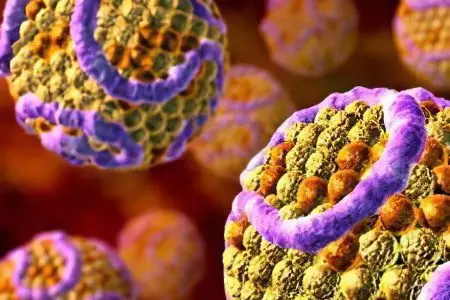Contents
What is albumin?

Albumin is a high concentration protein fraction contained in the blood, the total percentage of which is up to 65% of plasma proteins. It is synthesized in the liver. The molecule itself includes a huge number of amino acids, there are up to 600 of them, but it belongs to the group of low molecular weight simple proteins. If 40% of all protein fractions are located in the blood, then the rest of the “reserve” is distributed in the lymph, you can find it in the cerebrospinal fluid and interstitial fluid.
Albumins do not just circulate in the bloodstream; at the same time, they perform a number of vital functions for the body, namely:
The direct maintenance of the osmotic pressure of the blood plasma occurs precisely due to the protein. Thanks to this possibility, in a person with a normal level of albumin in the blood, fluid does not come out of the bloodstream and edema does not appear on the body. It is worth noting that it is these microscopic fractions and the amino acids included in its composition that maintain plasma pressure by 80%. Naturally, with any kidney disease, they quickly exit with urine, which is why almost all kidney pathologies are accompanied by swelling.
These components of the blood also perform a reserve function. They store reserves of amino acids for the life of the body. With prolonged starvation, they will be consumed in the first place.
The implementation of the transport function is also included in the “tasks” of albumin; it carries various substances in the blood, in particular, those that are poorly soluble in water. Free fatty acids are the “passengers” of protein, as well as steroids, vitamins (fat-soluble) and, in addition, some ions. Also, the protein is involved in the transport of many drugs through the bloodstream, in particular, penicillin, warfarin, and aspirin. Also, the protein fraction carries a number of hormones and connects non-polar substances, such as cholesterol, fatty acids and bilirubin. Due to the fact that the protein is unpretentious in choosing its “passengers” for transportation and carries a huge amount of a wide variety of substances, doctors called it the “taxi molecule”.
This kind of “storage of amino acids” got its name from the Latin albus – which means white, it is a protein in its pure form and does not contain a single gram of carbohydrates. In addition to the human body, it is very common in nature, so it can be found in chicken eggs, in some plants. Depending on how much albumin is contained in the blood, one can also judge how healthy the human body is.
The norm in the blood in women and men
As for the norm of albumin in the blood and the sexual characteristics of a person, there is no significant difference. An important role is played directly by the age of the subject, from whom the fence for the study was taken. That is why, speaking about the norm in the blood of men and women, it is more logical to use the age division scheme. So, if you calculate its values in grams per liter of liquid, then in children under 14 years old it is normally 38-54 g / l.
Having crossed the threshold of 60 years, the rate of albumin in the blood decreases somewhat and is already 32-46 g / l.
If the protein rises or falls, then this may be due to both qualitative and quantitative changes. But since the former are quite rare, due to the fact that the composition of albumin is homogeneous, quantitative changes are more common, which are manifested by hypo- and hyperalbuminemia. They can be caused by both external and internal factors and signal pathology in the body.
Diseases that increase albumin in the blood

Quite often, the cause of an increase in albumin in the blood is the banal dehydration of the body. But it is not always the lack of water that is a deviation from the norm.
Hyperalbuminemia a rather rare phenomenon, but often observed in the following pathological processes occurring in the human body:
Infectious diseases.
Myeloma disease.
Macroglobulinemia Waldenström.
Systemic lupus erythematosus.
Rheumatoid arthritis.
Chronic hepatitis or cirrhosis of the liver.
Vomiting or diarrhea, as the main causes of dehydration, and, consequently, the diseases that caused them.
Intestinal obstruction.
Diabetes and nephritis.
Extensive burns.
Taking corticosteroids and bromsulfalein.
Clamping of the veins, for example, when applying a tourniquet.
Cholera.
Dehydration in severe injuries.
Hemoconcentration.
Diseases that lower blood albumin

A decrease in this protein in the blood can also be caused by a number of diseases.
If there are such indicators, then this gives the doctor a reason to suspect some pathologies of the body, namely:
Diseases associated with impaired liver function, such as cirrhosis, atrophy, hepatitis or carcinoma.
When fasting in order to reduce body weight, as well as other errors in nutrition. This is especially true for low-protein diets, as well as diets that are not balanced in amino acid composition. Naturally, such conditions are observed in dystrophy and anorexia. Cachexia can cause a decrease in albumin in the blood.
Pathologies of the gastrointestinal tract of various origins.
Losses associated with burns, tissue injuries.
Nephrotic syndrome, diabetic nephropathy, as renal pathology. Losses are especially relevant in the chronic nature of the disease.
After bleeding, especially heavy bleeding, and the introduction of blood substitutes, the level of albumin naturally decreases.
Various kinds of febrile conditions, blood poisoning, previous or current infectious diseases, tumors of a malignant nature, rheumatic diseases, in a word, all those conditions that cause increased catabolism.
With an increase in blood volume, namely hyperhydration.
Congestive heart failure.
hereditary diseases.
In newborn children, as their liver cells are not yet fully mature.
As for conditions that are not caused by a specific disease, then pregnancy can be attributed to these. The woman’s body simply “shares” its own albumin with the fetus. A similar condition can also be observed during lactation. A balanced diet can help in this situation.
Often a decrease in albumin, and in a fairly significant concentration can be observed in cigarette lovers. So, in the blood of heavy smokers, this protein will be unequivocally reduced. The same applies to the abuse of alcoholic beverages.
The intake of certain drugs, especially with an overdose of drugs, leads to a decrease in albumin in the blood, so their intake should be carried out under medical supervision. In particular, this applies to aziotropin, the ibuprofen group, phenytoin and others.
Regarding the study of albumin levels, blood sampling should be carried out strictly on an empty stomach, in a calm state. Since even excessive physical exertion or a long stay of the subject in an upright position can affect the samples.
With an impressive decrease in the level of albumin, below the mark of 22 g / l, such a life-threatening condition as pulmonary edema can be observed.









